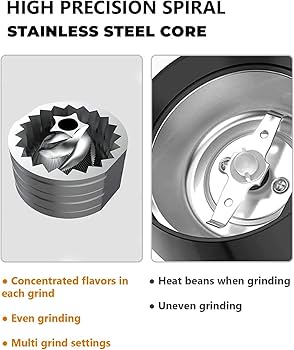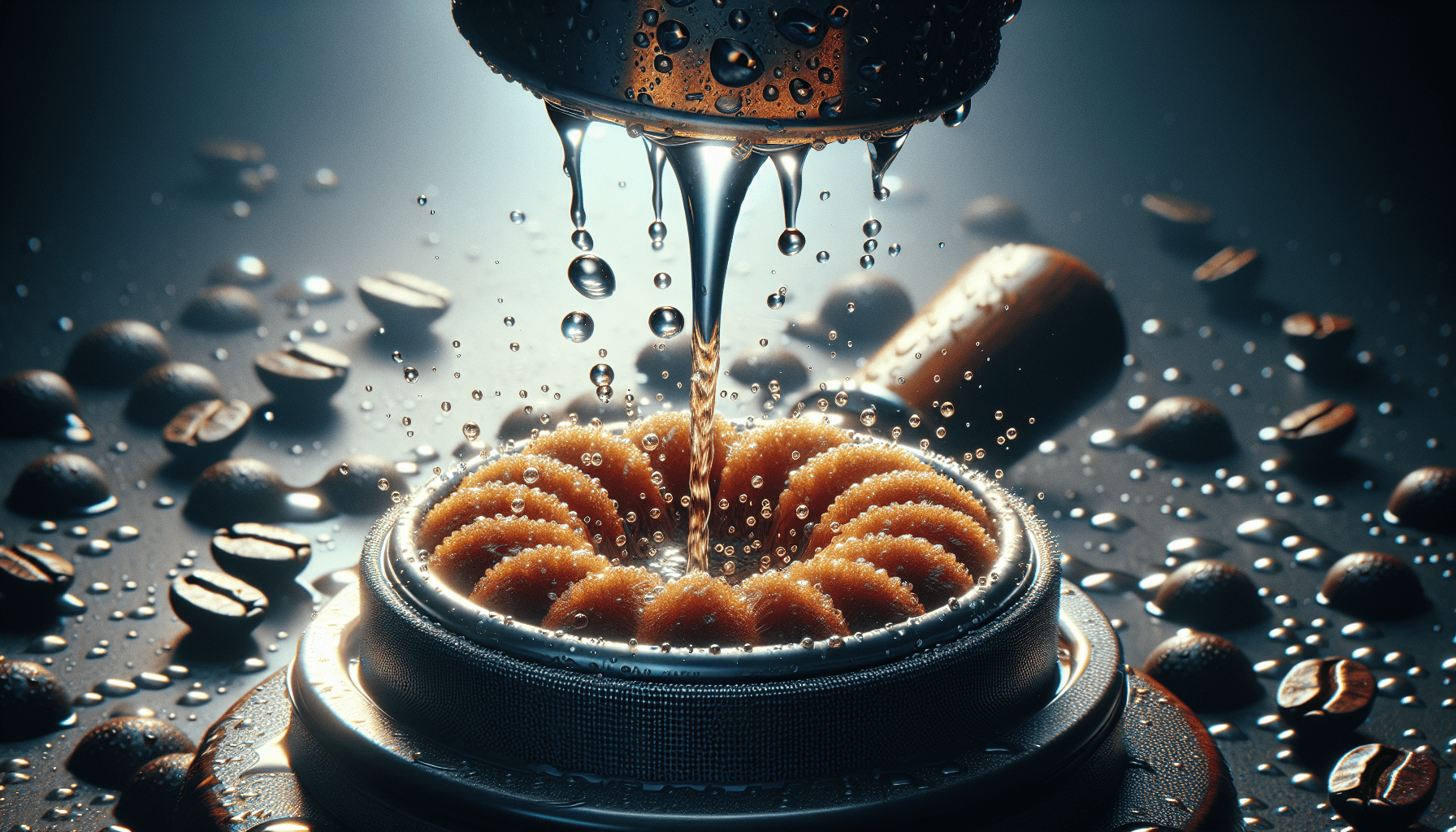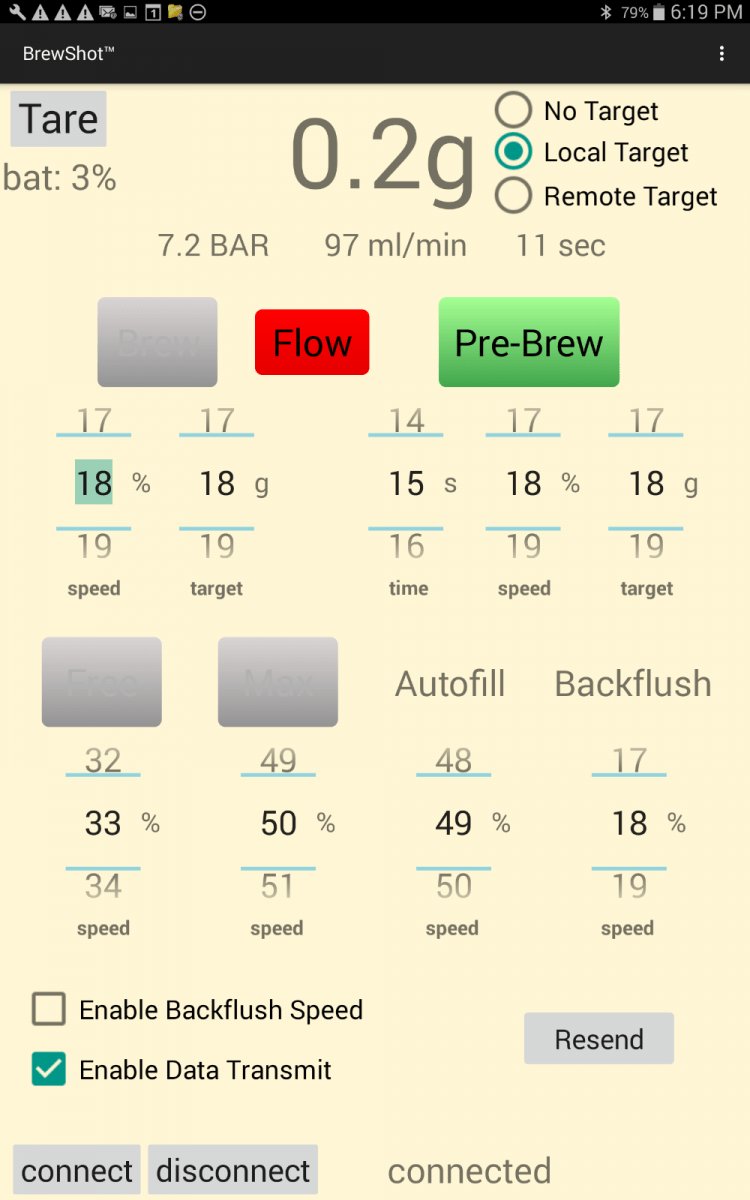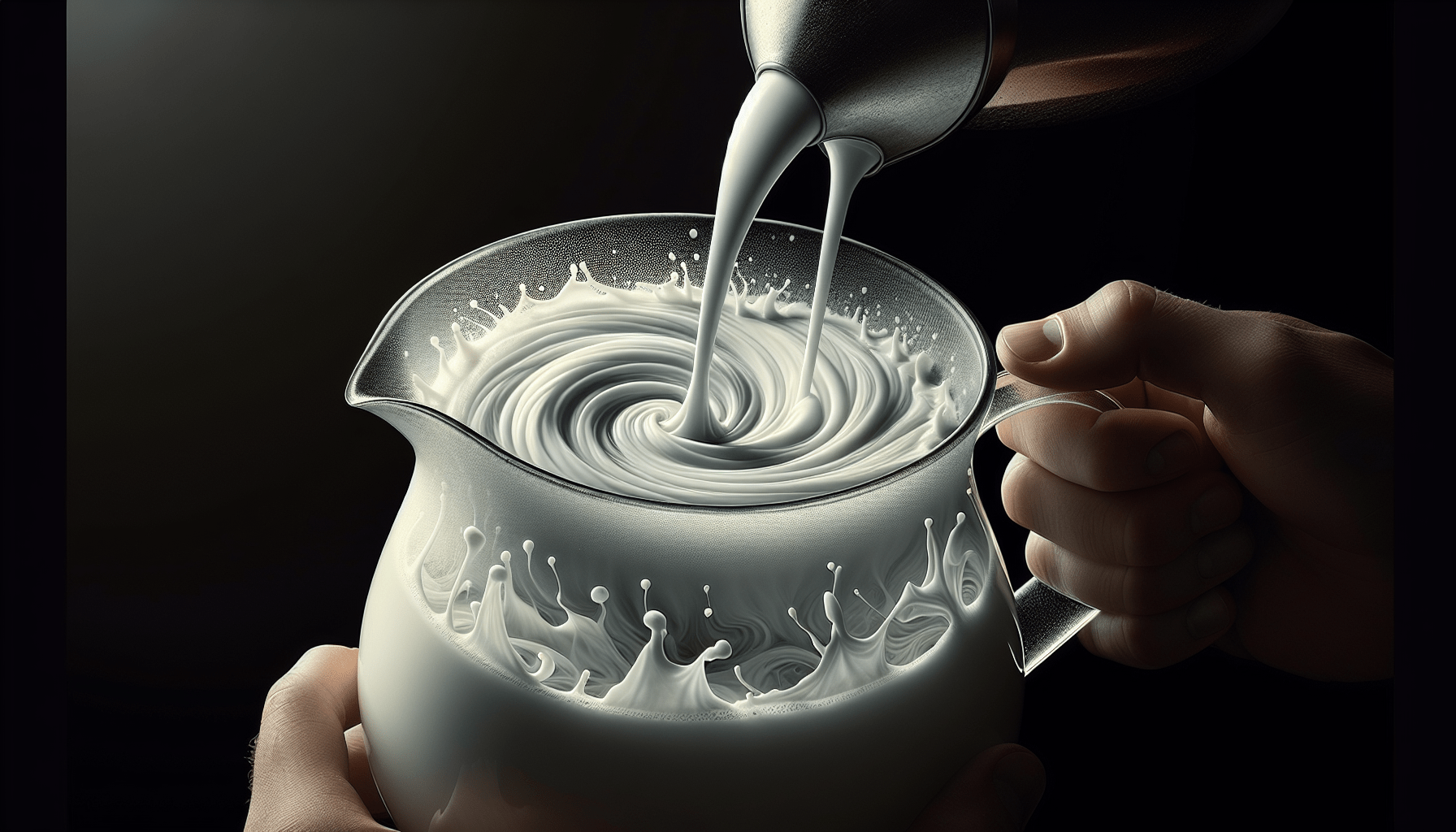What types of grinders are recommended for use with semi-automatic espresso machines?
Burr Grinder
When it comes to grinding coffee beans for your semi-automatic espresso machine, a burr grinder is highly recommended. Burr grinders use two revolving abrasive surfaces to crush the beans into a consistent size. This ensures uniformity in your espresso extraction, leading to a better flavor profile in your cup.
Flat Burr vs. Conical Burr
There are two main types of burr grinders to consider – flat burr and conical burr. Flat burr grinders produce a more consistent grind size, which is essential for espresso brewing. On the other hand, conical burr grinders are typically quieter and produce less heat during the grinding process, which can help preserve the beans’ flavors.
Choosing the right burr grinder for your semi-automatic espresso machine can significantly impact the quality of your espresso shots.
Blade Grinder
While blade grinders are more affordable and widely available, they are not recommended for use with semi-automatic espresso machines. Blade grinders chop the coffee beans rather than crushing them, resulting in an uneven grind size. This can lead to over-extraction or under-extraction of the coffee grounds, affecting the taste and quality of your espresso.
Consistency is Key
Consistency is key when it comes to espresso brewing. A burr grinder ensures that each coffee particle is the same size, which is crucial for creating a balanced and flavorful espresso shot. Investing in a quality burr grinder will elevate your coffee experience and allow you to extract the full potential of your semi-automatic espresso machine.
Electric vs. Manual
When choosing a grinder for your semi-automatic espresso machine, you will also need to decide between an electric or manual grinder. Electric grinders are more convenient and efficient, allowing you to grind coffee beans with the push of a button. Manual grinders, on the other hand, require more effort but offer greater control over the grind size.
Electric Grinder
Electric grinders are perfect for those who value convenience and consistency. They typically come with various grind settings, allowing you to adjust the coarseness of the grind to suit your espresso machine’s requirements. Electric grinders are also faster than manual grinders, making them ideal for busy mornings or multiple espresso servings.
Manual Grinder
Manual grinders are a popular choice among coffee enthusiasts who enjoy the ritual of hand grinding their beans. While manual grinders may require more time and effort, they provide a more hands-on approach to coffee brewing. With a manual grinder, you can fine-tune the grind size to perfection, ensuring that your espresso shots are always top-notch.
Whether you choose an electric or manual grinder for your semi-automatic espresso machine, both options can deliver excellent results. It ultimately comes down to personal preference and how involved you want to be in the coffee-making process.
Stepless vs. Stepped Grinders
Another factor to consider when selecting a grinder for your semi-automatic espresso machine is whether you prefer a stepless or stepped grinder. Stepless grinders offer infinite grind settings, allowing you to make tiny adjustments to achieve the perfect grind size. Stepped grinders, on the other hand, come with preset notches that limit your grind size options.
Stepless Grinder
Stepless grinders provide the ultimate control over your grind size, giving you the flexibility to dial in your espresso shots precisely. This can be beneficial for espresso enthusiasts who are particular about extracting the perfect flavor profile from their coffee beans. With a stepless grinder, you can fine-tune the grind size to match your espresso machine’s specifications and your desired taste preferences.
Stepped Grinder
Stepped grinders offer a more straightforward approach to adjusting the grind size, as they come with predefined settings that you can easily switch between. While stepped grinders may not provide as much precision as stepless grinders, they are user-friendly and convenient for those who prefer a more straightforward grind adjustment process. Stepped grinders are ideal for espresso beginners or anyone looking for a hassle-free grinding experience.
Deciding between a stepless or stepped grinder ultimately comes down to how much control you want over your espresso shots. If you are someone who enjoys experimenting with different grind sizes and extraction times, a stepless grinder may be the best choice for you. On the other hand, if you prefer a more straightforward approach to grinding coffee beans, a stepped grinder could be the better option.
Dosage Control and Settings
One of the essential features to look for in a grinder for your semi-automatic espresso machine is dosage control. Dosage control allows you to measure the exact amount of coffee beans needed for each espresso shot, ensuring consistency in your brewing process. Some grinders come with preset dosage settings, while others allow you to customize the dose according to your preferences.
Programmable Dosing
Programmable dosing is a convenient feature that allows you to set the grinder to dispense a specific amount of coffee grounds with a push of a button. This is particularly useful for preparing multiple espresso shots or for those who prefer a hassle-free brewing experience. With programmable dosing, you can achieve consistent results every time you brew espresso.
Single vs. Double Dose
Most semi-automatic espresso machines use either a single or double dose of coffee grounds per shot. When choosing a grinder, make sure it offers the flexibility to adjust between single and double dose settings. This allows you to customize the amount of coffee grounds for each shot, ensuring that you can achieve the perfect extraction for your espresso.
Dosage control and settings play a significant role in the consistency and quality of your espresso shots. By selecting a grinder with programmable dosing and single or double dose options, you can easily adjust the grind size and dosage to match your espresso machine’s requirements and your taste preferences.
Retention and Static
Grinders for semi-automatic espresso machines can also vary in terms of retention and static electricity. Retention refers to the amount of coffee grounds that are retained inside the grinder after each use, affecting the freshness and flavor of the coffee. Static electricity can also be an issue with some grinders, leading to clumping and uneven distribution of coffee grounds.
Low Retention
Grinders with low retention are ideal for espresso brewing, as they minimize the amount of coffee grounds left inside the grinder between uses. This helps preserve the freshness of the beans and ensures that you get the most flavor out of each espresso shot. Look for grinders with design features that prevent coffee grounds from getting stuck inside the machine, such as antistatic coating or removable parts for easy cleaning.
Anti-Static Features
Static electricity can be a common issue with coffee grinders, especially when grinding fine coffee particles for espresso. Anti-static features, such as coated burrs or grounding mechanisms, can help reduce static buildup and minimize clumping of the coffee grounds. By choosing a grinder with anti-static properties, you can ensure a more even distribution of coffee grounds and better extraction during brewing.
By selecting a grinder with low retention and anti-static features, you can optimize the freshness and flavor of your coffee beans. These design elements contribute to a better espresso brewing experience and help you extract the full potential of your coffee beans with each shot.
Size and Capacity
The size and capacity of the grinder are also crucial factors to consider when choosing a grinder for your semi-automatic espresso machine. The grinder’s size should fit comfortably on your countertop or coffee station, while the capacity should be sufficient to accommodate your espresso brewing needs.
Compact vs. Large Grinders
Compact grinders are perfect for small kitchen spaces or for those who prefer a minimalist coffee setup. These grinders take up less room on the countertop and are ideal for single or occasional espresso drinkers. Large grinders, on the other hand, offer greater capacity for grinding coffee beans and may come with additional features such as a larger hopper or more grind settings.
Hopper Size
The hopper size of the grinder determines how many coffee beans you can grind at once. A larger hopper capacity is beneficial for those who brew multiple espresso shots throughout the day or for commercial settings where a high volume of coffee is required. Make sure to consider the hopper size when selecting a grinder, as it can impact the grinding efficiency and convenience of your coffee brewing process.
Choosing a grinder with the right size and capacity for your brewing needs is essential for a seamless espresso experience. Whether you opt for a compact grinder for minimal spaces or a larger grinder for higher coffee volume, make sure it fits your lifestyle and brewing habits.
Cleaning and Maintenance
Regular cleaning and maintenance are essential for ensuring the longevity and performance of your grinder. Grinders for semi-automatic espresso machines can accumulate coffee oils and residue over time, affecting the flavor of your coffee and the grinder’s functionality. Proper cleaning and maintenance practices can help prolong the life of your grinder and keep your espresso shots tasting fresh and delicious.
Cleaning Frequency
The frequency of cleaning your grinder will depend on how often you use it and the type of coffee beans you grind. It’s recommended to clean your grinder at least once a week or bi-weekly to prevent coffee oils from building up and affecting the flavor of your espresso. Regular cleaning will also help maintain the grinder’s burrs and ensure consistent grinding performance.
Cleaning Techniques
To clean your grinder, you can use a grinder brush to remove any coffee grounds or residue from the burrs and hopper. Some grinders come with removable parts that can be washed with warm, soapy water to remove stubborn coffee oils. It’s essential to follow the manufacturer’s cleaning instructions and avoid using harsh chemicals or abrasive materials that may damage the grinder’s components.
Keeping your grinder clean and well-maintained is key to achieving optimal espresso extraction and preserving the flavor of your coffee beans. By incorporating regular cleaning practices into your coffee routine, you can ensure that your grinder remains in top condition and delivers delicious espresso shots every time.
Budget and Quality
When choosing a grinder for your semi-automatic espresso machine, it’s essential to consider your budget and the quality of the grinder. While budget-friendly options are available, investing in a high-quality grinder can significantly impact the taste and consistency of your espresso shots.
Entry-Level Grinders
Entry-level grinders are affordable options for those who are just starting their espresso journey or are on a tight budget. These grinders may have limited features and grind settings but can still produce decent espresso shots. Entry-level grinders are suitable for occasional espresso drinkers or those who are not too particular about espresso quality.
Mid-Range Grinders
Mid-range grinders offer a balance between affordability and quality, providing more grind settings and features compared to entry-level grinders. These grinders are suitable for home baristas who are passionate about espresso brewing and want more control over their grind size and dosage. Mid-range grinders can deliver consistent results and produce high-quality espresso shots.
High-End Grinders
High-end grinders are designed for coffee enthusiasts who value precision, performance, and durability. These grinders come with advanced features such as stepless adjustments, programmable dosing, and low retention to optimize espresso extraction. While high-end grinders come at a higher price point, they offer unparalleled control over your coffee brewing and can elevate your espresso experience to a whole new level.
Choosing a grinder that fits your budget and quality standards is essential for enjoying the best espresso at home. While entry-level grinders are a good starting point, consider investing in a mid-range or high-end grinder for improved espresso quality and consistency.
Conclusion
Selecting the right grinder for your semi-automatic espresso machine is crucial for achieving a perfect espresso shot every time. By considering factors such as burr type, electric vs. manual, stepless vs. stepped, dosage control, retention, size, cleaning, maintenance, budget, and quality, you can find a grinder that meets your brewing needs and preferences.
Investing in a high-quality burr grinder with programmable dosing, low retention, and anti-static features can make a significant difference in the taste and consistency of your espresso shots. Take the time to explore different grinder options, try out various grind sizes, and experiment with espresso extraction to find the perfect grinder for your semi-automatic espresso machine.
Remember, the grinder plays a crucial role in the espresso brewing process, so choose wisely and enjoy the journey of creating delicious espresso at home with your semi-automatic espresso machine.




